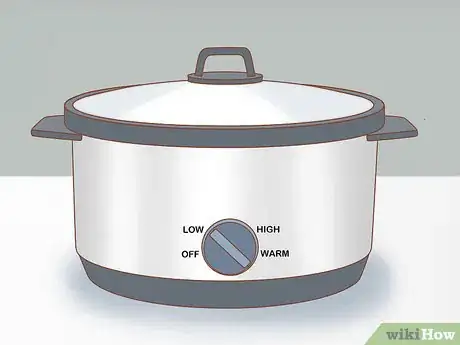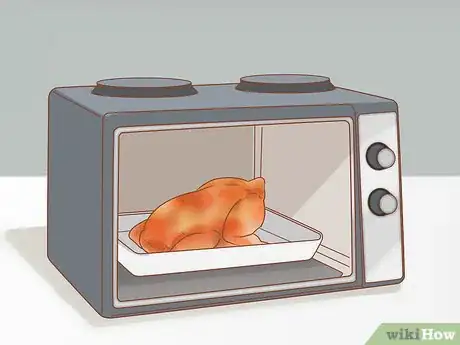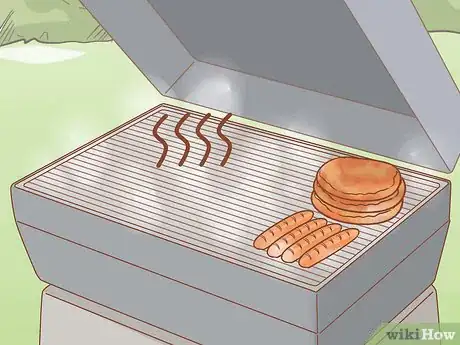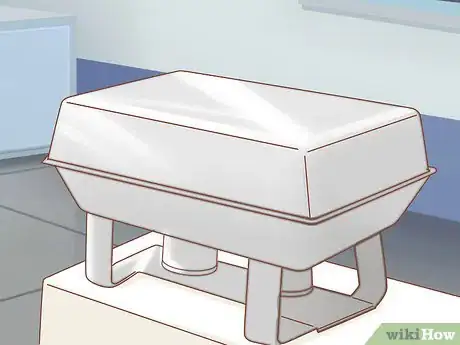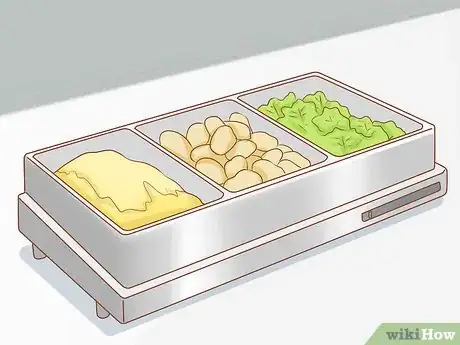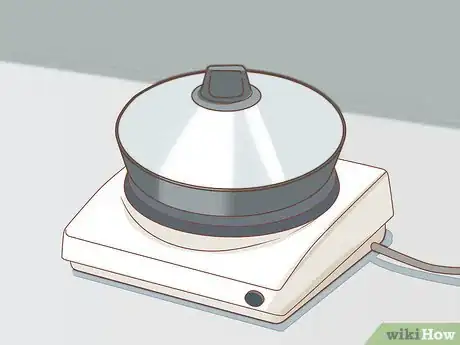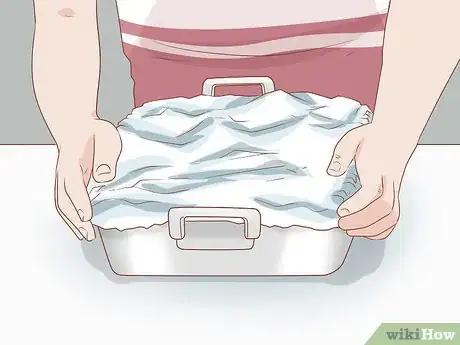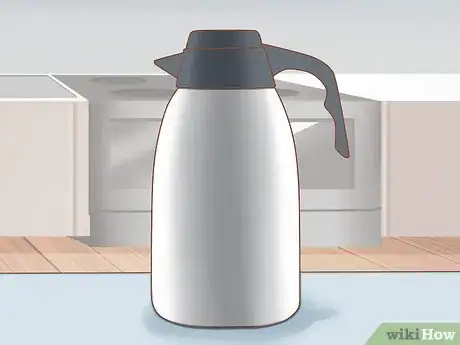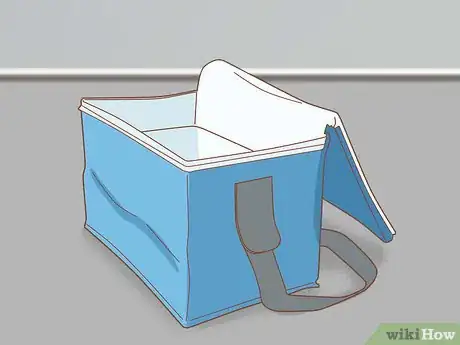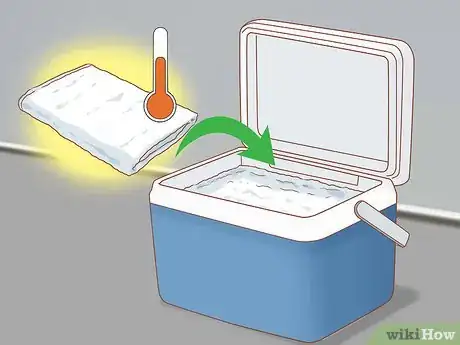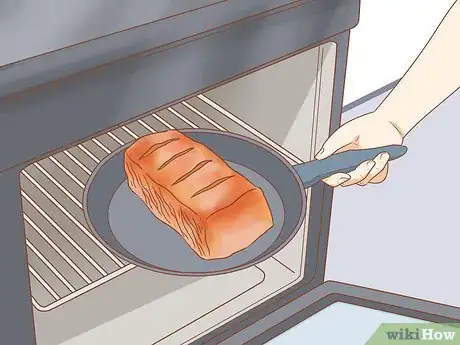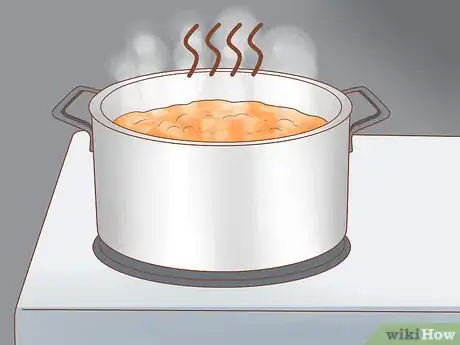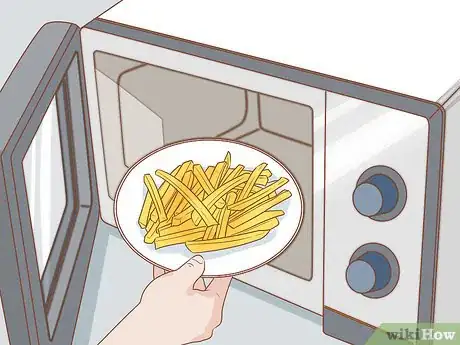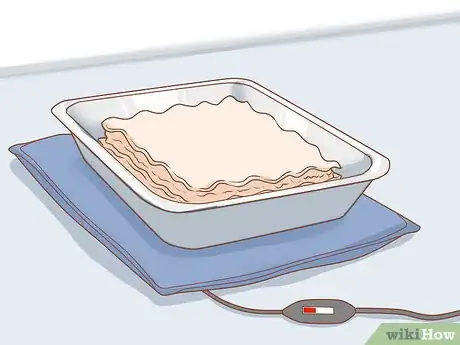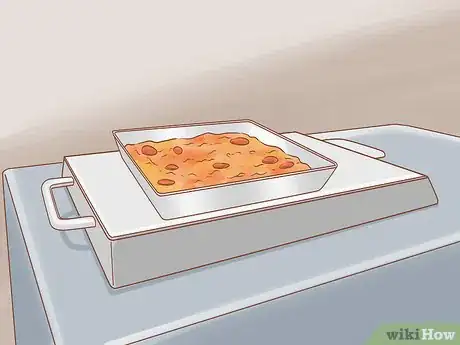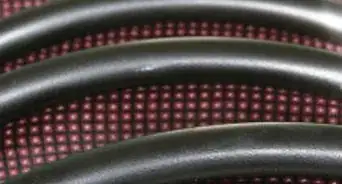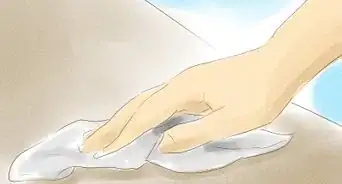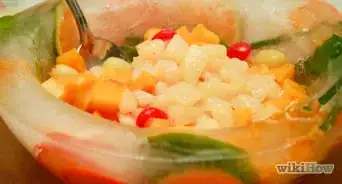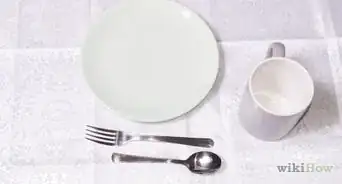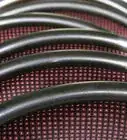This article was co-authored by Jillian Fae Downing. Jillian Fae Downing is a Private Event Chef, Chef Educator, and the Owner of Jillian Fae Chef Services based out of Temecula, California. With 12 years of experience, she specializes in menu planning and menu research and development. Jillian Fae holds an Associate of Science in Culinary Arts from Orange Coast College and a BA in Mass Communication and Media Studies from Arizona State University. She is also a member of the American Culinary Federation and the American Personal and Private Chef Association.
There are 12 references cited in this article, which can be found at the bottom of the page.
This article has been viewed 46,870 times.
When you’re hosting a party, keeping your eye on the food is a challenging but important task. Food left to cool not only tastes unpleasant but becomes unsafe to eat due to bacterial growth. Fortunately, keeping food warm is easy thanks to a variety of tools, from conventional slow cookers to heating elements like chafing dishes. Choose what you need to make your party a success and, when in doubt, put the food back in the oven for a quick fix.
Steps
Using Food-Warming Tools
-
1Use a slow cooker if you need to keep a soup, stew, or liquid warm. Plug the slow cooker into a nearby electrical outlet and let it run. Keep the slow cooker at a low heat setting to avoid overcooking the food. It’s a hands-free way to keep food warm while guests help themselves. Slow cookers are the best choice for simmering soups and stews, but they work well for most food.[1]
- Most slow cookers have a low heat or “warm” setting. Choose the lowest setting possible on your model. Slow cookers will continue to cook your food if you set them at the wrong temperature.
- The downside of using a slow cooker is that you need to have an electrical outlet handy. Make sure you have an open outlet in an out of the way spot.
- A rice cooker is another option for heating rice-based dishes and other sides.
-
2Try a portable oven if you need to keep solid food warm. Portable ovens and roaster ovens are an efficient way to heat up foods from meats to pizzas. You need an electrical outlet available. Plug the oven in, then set it to a low temperature, around 200 °F (93 °C), to keep food warm.[2]
- Small ovens are similar to slow cookers in that they keep food warm at a low temperature. Setting the oven at a higher temperature by mistake will overcook the food.
- If you are hosting the party at home, you can use your usual oven. Many ovens have a warm feature. If your oven doesn’t have it, just set it to a temperature of around 170 °F (77 °C).
- Toaster ovens are a good option even if you have a regular oven available. Use them to efficiently reheat or maintain food instead of dealing with a bigger, hotter oven.
Advertisement -
3Use indirect heat from a grill if you need to preserve larger dishes. Using a grill is a great way to keep meat like hamburgers and hot dogs warm, although it works for side dishes like potatoes or casseroles too. Heat up 1 side of the grill to a low temperature. Seal the food in foil to help it retain heat and moisture, then set it on the colder side of the grill so it stays warm without overcooking.[3]
- Use a thermometer to monitor the grill’s temperature. Heating up the grill too much is an easy mistake to make.
- When setting food on the grill, make sure you use heat-resistant pans and containers.
-
4Store foods in chafing dishes to preserve them buffet-style. Chafing dishes come in a variety of sizes, so there are models suited for meat like sliced ham, mixed dishes like paprikash, and even soups. You pour hot water into the bottom part of the dish. Then, you activate the gas canister or electrical heating unit underneath the dish to keep the food at a steady temperature.[4]
- If you serve food at lots of parties, chafing dishes are a worthy investment. They are available online or at some party supply stores. An alternative option is to rent them from catering companies.
- Choose dishes based on what you’re serving. For example, rectangular and oval-shaped dishes are often best for meats or other main courses. Use a round dish or soup dish for liquids.
- For gas units, you will need a small canister of fuel, available at most party supply stores and general stores. Light the canister with a match or the switch on some chafing dish models.
-
5Use a warming tray if you need to keep multiple small dishes hot. Warming trays are very similar to chafing dishes. They are often smaller in size but have separate compartments to store multiple foods side-by-side. Gas and electric trays are both available to suit your party’s needs.[5]
- Some warming trays are completely flat. Instead of putting the food in a compartment, you set the food in a dish on top of the tray.
- Warming trays are often smaller than chafing dishes, so unless you serve smaller quantities of food, they’re a better option for sides and appetizers like small portions of meat, potatoes, and vegetables than entrees and liquid dishes.
-
6Plug in a hot plate if you have a single dish to keep warm. Hot plates, like you may have used in science class, are useful for heating food in batches. Hot plates are relatively small and most of them are electric. Place something like a bowl of potatoes on the burner, then turn its dial to a low temperature to preserve it.[6]
- Some heating plates have 2 burners, allowing you to heat up multiple dishes at once. They still don’t offer a lot of space for each dish, so keep that in mind when planning your party.
- Microwavable hot plates are also available. Heat them in the microwave for 2 to 3 minutes according to the manufacturer’s instructions, then set food on top of them.
Storing Food in Heat-Preserving Containers
-
1Cover open containers thoroughly with tin foil. No matter how you serve food, it will lose heat when exposed to open air. Wrap dishes tightly in foil until you’re ready to serve the food. Put the foil back into place when nobody needs to access the food.[7]
- Thicker layers of foil keep the food warmer for longer. Cover dishes with a few layers of foil to trap in heat.
-
2Use heat-insulated serving dishes to preserve food for longer. Heavier dishes keep food warmer than thinner dishes. Ceramic and clay dishes are some of the best options available. Reserve your best serving dishes for any hot food you plan on serving at the party.[8]
- Heavier, thicker dishes retain more heat but also tend to cook food faster. Use dishes carefully to prevent food from overcooking.
-
3Store liquids in insulated bottles before serving them. Cook a soup or gravy ahead of time, then pour it into a coffee thermos. When you need to serve it, pour it out directly from the bottle. A quality bottle keeps liquids warm for long periods of time. They are easy to carry around and you can always pour the liquid into another serving container as needed.[9]
- If you leave food in a bottle, consider labeling it so guests know what they’re getting.
-
4Put food in insulated food carrying bags for short-term storage. Insulated bags are what pizza parlors use to deliver food to customers. Get the food as hot as possible, then slide the container inside the bag. Bags keep food warm for up to a few hours and they're highly portable.[10]
- Carrying bags come in a variety of sizes. Some are as small as lunchboxes. Others are made to store casserole dishes and even have pouches that provide separate space for cold dishes.
-
5Use coolers to trap heat when transporting foods. Coolers are good for more than carrying drinks. Wash some towels in a hot water cycle in the dishwasher, then roll them up and set them in the cooler. Place the food inside the cooler and cover it with another layer of warm towels.[11]
- You don’t need the towels to use a cooler. Well-covered food will stay warm, but the towels help trap heat in the food you need to store for up to a few hours.
- Another option is to wrap bricks in foil. Heat them for 2 hours in an oven set to 300 °F (149 °C). Then, set them on top of the first layer of towels to provide extra heat.
Reheating Food and Plates
-
1Reheat meat dishes in the oven for up to 30 minutes. Place the meat in a roasting pan and add about 1 cup (240 mL) of warm water or stock. Cover the pan completely with foil to trap in the heat and moisture. Then, turn the oven to about 350 °F (177 °C) and heat the food until it’s warm again.[12]
- This is a good way to reheat pre-cooked meats. For example, add warm turkey stock to turkey breast and heat it for about 30 minutes.
- For fish and smaller cuts of meat, you don’t need to add water or stock. Set them in the pan and heat them until fully warmed (about 15 to 20 minutes).
- Side dishes like vegetable trays and casseroles can be heated in the oven the same way. Leave them in at 350 °F (177 °C) for about 15 minutes.
-
2Simmer soups and liquids on the stove if they begin to cool. Pour the food from a serving bowl into a saucepan. Turn the stove to a medium heat setting and wait for the liquid to begin to bubble slightly. Keep stirring it to prevent it from boiling and overheating.[13]
- Side dishes like mashed potatoes are a little trickier to heat up this way. Add milk or broth to bring the food to the consistency you desire, then keep stirring it until it’s hot.
-
3Microwave smaller sides that don’t need to be crisped. Smaller quantities of food and sides like vegetables, potatoes, and macaroni and cheese do well in the microwave. Move them into a microwave-safe dish. Loosely cover the dish with its lid or plastic wrap. Reheat the food for about 4 minutes, then take it out and stir it. Heat it for another 3 minutes until it reaches 165 °F (74 °C).
- Microwaves heat food unevenly, so you need to monitor the food’s temperature. Heat the food in slow bursts, stirring it each time to help it warm up evenly.
- Microwave are not a good choice for most meat. They tend to turn meat flabby and gray. They also cannot crisp up food like fries.
-
4Warm your plates before serving food on them. If you have an electric plate warmer or an accessible oven, store serving plates in it. Heat the plates at a temperature of 150 °F (66 °C) for about 15 minutes. Warm plates heat up food a little, causing slightly cooled food to still taste great.[14]
- Put thick, dishwasher-safe plates in the dishwasher to heat them. Leave clay plates in for up to 2 hours to ready them for the party.
-
5Use a heating pad if you need to keep served plates of food warm. If you are short on heating options, set an electric heating pad between towels or heat-resistant mats. Plug the heating pad into a wall outlet, then set the serving tray on top of it. It’s a good way to keep plates of food warm after you serve them, including larger dishes like sliced ham or turkey.[15]
- Electric blankets work similarly to heating pads. Plug them into the wall and let them heat up to spread more warmth to your food.
- Heated gel packs are another option. Warm them up in a microwave according to the manufacturer’s instructions, then place them under plates of food.
Community Q&A
-
QuestionIf I make spaghetti ahead of time, can I warm it the next day in an aluminum pan covered with foil inside the oven?
 QamarTop AnswererYes, you can. Make sure it is refrigerated up until the time it is needed and cover it well to avoid door cross-contamination. When reheating it, you may want to add extra sauce over it since reheating pasta can dry out the liquid content. Other than that, it'll still be good to use for the party.
QamarTop AnswererYes, you can. Make sure it is refrigerated up until the time it is needed and cover it well to avoid door cross-contamination. When reheating it, you may want to add extra sauce over it since reheating pasta can dry out the liquid content. Other than that, it'll still be good to use for the party.
Warnings
- Food accumulates dangerous bacteria as it cools. To prevent the spread of bacteria, keep food above 140 °F (60 °C). Throw out any food left under 140 °F (60 °C) for more than 2 hours.[16]⧼thumbs_response⧽
Things You’ll Need
Using Food-Warming Tools
- Slow cooker
- Portable oven or toasting oven
- Tin foil
- Grill or barbeque
- Chafing dishes
- Warming trays
- Hot plates
Storing Food in Heat-Preserving Containers
- Tin foil
- Serving dishes
- Insulated beverage bottles
- Insulated carrying bags
- Cooler
- Towels
Reheating Food and Plates
- Oven
- Stove
- Microwave
- Foil
- Measuring cup
- Water
- Roasting tray or microwave-safe container
- Saucepan
- Heating pads or plate warmer
- Kitchen thermometer
References
- ↑ https://www.bonappetit.com/entertaining-style/holidays/article/thanksgiving-crockpot
- ↑ https://www.fsis.usda.gov/food-safety/safe-food-handling-and-preparation/food-safety-basics/how-temperatures-affect-food
- ↑ https://www.youtube.com/watch?v=XbGhrbbkk-I&feature=youtu.be&t=29
- ↑ https://www.youtube.com/watch?v=bXa5oVhkwYw&feature=youtu.be&t=66
- ↑ https://www.fda.gov/food/resourcesforyou/consumers/ucm328131.htm
- ↑ https://twokooksinthekitchen.com/10-tips-on-keeping-foods-warm/
- ↑ https://www.goodhousekeeping.com/uk/food/a559635/how-to-keep-food-warm-party-chef-tips-the-cinnamon-club/
- ↑ https://www.goodhousekeeping.com/uk/food/a559635/how-to-keep-food-warm-party-chef-tips-the-cinnamon-club/
- ↑ https://twokooksinthekitchen.com/10-tips-on-keeping-foods-warm/
- ↑ https://www.southernliving.com/tailgating/how-to-keep-food-warm-tailgate-party
- ↑ https://www.southernliving.com/tailgating/how-to-keep-food-warm-tailgate-party
- ↑ https://food.unl.edu/keeping-foods-warm-while-other-foods-get-done
- ↑ https://spoonuniversity.com/how-to/how-to-reheat-food-without-a-microwave
- ↑ https://www.thekitchn.com/why-and-how-do-i-warm-dinner-p-112302
- ↑ https://twokooksinthekitchen.com/10-tips-on-keeping-foods-warm/
- ↑ https://extension.usu.edu/sanpete/files/Holiday_or_Party_Buffet_Food_Safety.pdf
About This Article
To keep food warm at a party, make sure you cover any containers with tin foil to keep the heat inside for longer. You can also keep soups and liquids warm in insulated bottles like a coffee thermos. If you have a portable oven or roaster oven, use it to keep any solid food warm. Alternatively, heat up 1 side of a grill to a low temperature and store food on the other side to keep things warm outside. For soup, stew, or other liquids, use a slow cooker so they’re ready to serve whenever you want them. For more tips, including how to safely reheat food for a party, read on!
